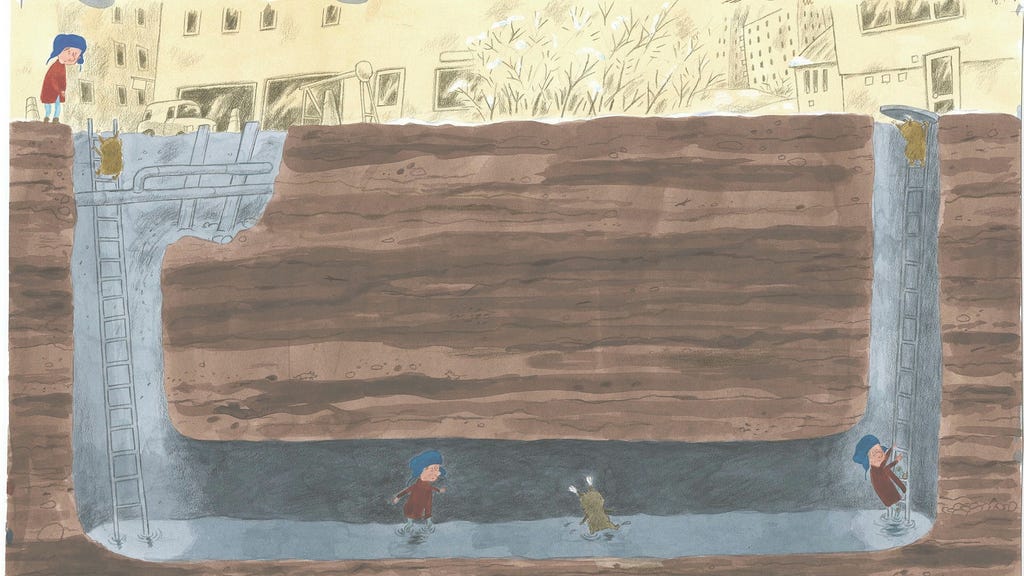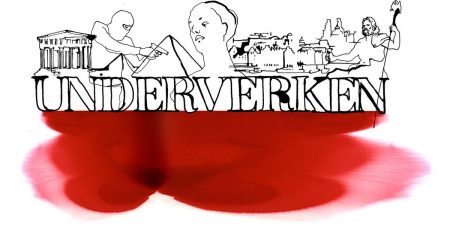Pija Lindenbaum’s books are often met with the enthusiastic cry of ”AGAIN!” Her fantastical worlds, blending naturalism, realism, and dreamlike sequences, invite readers, young and old, to revisit the lives of her quirky characters. From anxious little girls and kind uncles to sassy dogs and justifiably exasperated mothers, Lindenbaum’s stories are populated with individuals who open cafes, manage daily chaos, and offer endless opportunities for connection, laughter, and recognition. ”Följa John,” however, presents a departure from this pattern. While visually captivating, the narrative feels oddly static. The reader is left with a sense of, ”That’s it?” This unexpected stillness, though jarring, doesn’t diminish the enchanting artistry of Lindenbaum’s illustrations.
The signature Lindenbaum aesthetic prevails in ”Följa John.” Walls tilt, chairs dance, and buildings sway, creating a world in perpetual, yet controlled, motion. This visual dynamism contrasts sharply with the narrative’s relative inactivity. The story centers on John, a mysterious cat-like creature who stays home, perhaps playing the role of caretaker, with a sniffling boy. The power dynamic quickly shifts, revealing it is the sick child who is tasked with keeping up with the energetic John. The feline protagonist slides down banisters, pilfers candy, eats with wrappers still on, and rides elevators with such abandon that he vomits. Lindenbaum cleverly orients some pages sideways, visually elongating the elevator journey and amplifying the dizzying effect.
John’s escapades continue. He borrows unsuspecting dogs, scales trees, and even tries his hand at pizza making. The sniffling boy trails behind, willingly caught in John’s whirlwind of activity. John embodies the boy’s unbridled imagination, a wild, make-believe companion who acts out the desires the boy can only dream of. This dynamic evokes comparisons to other beloved children’s literature characters. John possesses the mischievous spirit of Karlsson-on-the-Roof, the secret camaraderie of Alfons Åberg’s Mållgan, and the diminutive stature of Nils Karlsson Pyssling. He most closely resembles Karlsson, sharing his impulsive and rebellious nature.
John’s whirlwind of activity eventually winds down, landing him and the boy back on the sofa just as the parents arrive home. Interestingly, the parents bear a striking resemblance to John, hinting at a transgenerational connection and the enduring power of childhood fantasies. The story subtly explores themes of belonging, battling boredom, and the primacy of imagination and love over external appearances. The boy’s declaration, ”He is my brother and I am his,” encapsulates the deep bond between them. While these themes are poignant and meaningful, the characters, despite their distinctive appearances, feel somewhat anonymous. This lack of depth prevents the reader from fully engaging with the story.
Lindenbaum’s worlds typically possess a buoyant quality, yet they are usually anchored by a narrative thread, however brief, that provides context and connection. This grounding element is missing in ”Följa John.” The reader remains an observer, not a participant in the story, unable to grasp the emotional core of the characters or their experiences. The book’s imaginative illustrations, while visually captivating, cannot compensate for the lack of narrative depth. This absence of a compelling story arc leaves the reader somewhat detached, unable to fully immerse themselves in the world Lindenbaum has created.
Despite the visual appeal and the intriguing premise of a child’s imaginary friend, ”Följa John” falls short of the typical Lindenbaum magic. The disconnect between the vibrant illustrations and the comparatively uneventful narrative creates a sense of imbalance. While the book explores universal themes of belonging and the importance of imagination, the lack of character development and a clearly defined narrative arc prevents these themes from resonating deeply with the reader. The book feels less like a journey and more like a series of visually arresting vignettes. This departure from Lindenbaum’s usual storytelling style may leave readers, accustomed to her richly layered narratives, feeling somewhat unsatisfied. The absence of the familiar ”AGAIN!” sentiment underscores this departure, highlighting the book’s relative lack of narrative grip. While the whimsical illustrations and the playful dynamic between the boy and John hold a certain charm, the story ultimately lacks the emotional depth and narrative complexity that typically characterize Lindenbaum’s work.














